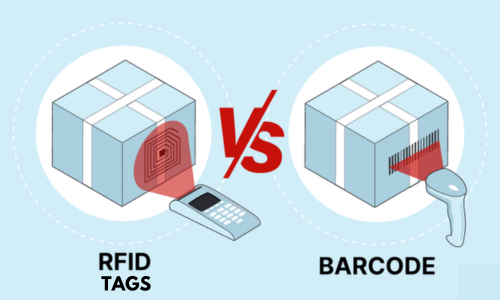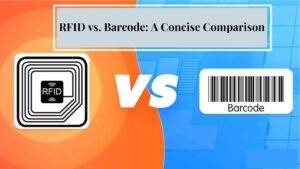
Efficient tracking and management of assets, inventory, and products are critical for business success. Accurate records and streamlined operations can significantly impact productivity and profitability. Radio Frequency Identification (RFID) tags and barcodes are two widely used technologies. While both have merits, RFID tags often provide superior performance in various key areas, particularly in specific industries. This comparison highlights the benefits of RFID tags over barcodes in sectors such as library management, retail stores, asset and inventory tracking, jewelry shops, and logistics management.
Understanding RFID Technology and Barcodes
Barcodes
Barcodes are optical, machine-readable representations of data. They consist of parallel lines of varying widths and spaces, each representing specific information like a product number. Barcodes are scanned using a laser scanner that reads the reflected light and interprets the data.
RFID Tags
RFID tags use electromagnetic fields to easily identify and track tags attached to objects. An RFID system includes tags (transponders), readers (interrogators), and antennas. RFID tags contain a microchip that stores data and an antenna that transmits the data to an RFID reader. This technology enables contactless data exchange and can read multiple tags simultaneously.
Advantages of RFID Tags Over Barcodes
- Library Management
Barcodes:
- Pros: Simple and inexpensive.
- Cons: Require direct line of sight to be scanned, which can be time-consuming when manually checking in and out books.
RFID Tags:
- Pros: Streamline the process of checking books in and out. Multiple books can be scanned simultaneously without needing a direct line of sight.
- Example: Libraries with RFID systems can allow patrons to check out books themselves, enhancing user experience and reducing staffing needs.
- Retail Stores
Barcodes:
- Pros: Widely adopted and cost-effective.
- Cons: Scanning individual items at checkout can be slow, and inventory checks require manual scanning of each item.
RFID Tags:
- Pros: Speed up the checkout process by scanning multiple items at once. Enable real-time inventory tracking, reducing stock discrepancies.
- Example: Retailers using RFID can perform inventory audits quickly and accurately, ensuring better stock management and minimizing out-of-stock situations.
- Asset and Inventory Tracking
Barcodes:
- Pros: Effective for basic inventory tracking.
- Cons: Time-consuming to scan each item individually, and prone to human error.
RFID Tags:
- Pros: Allow for automatic, real-time tracking of assets and inventory. Can scan multiple items at once and from a distance, increasing efficiency and accuracy.
- Example: Warehouses with RFID systems can locate specific items quickly, manage stock levels more effectively, and reduce the labor required for inventory audits.
- Jewelry Shops
Barcodes:
- Pros: Cheap and straightforward.
- Cons: Limited by their size and the need for a direct line of sight, making them less practical for small items like jewelry.
RFID Tags:
- Pros: Ideal for tracking high-value, small-sized items. Provide enhanced security and reduce the risk of theft.
- Example: Jewelry stores can use RFID to quickly conduct inventory checks and ensure that all items are accounted for, improving security and inventory management.
- Logistics Management
Barcodes:
- Pros: Inexpensive and reliable for basic tracking.
- Cons: Labor-intensive, as each package must be scanned manually. Inefficient for tracking large volumes of items.
RFID Tags:
- Pros: Improve the efficiency of tracking and managing shipments. Allow for bulk reading of tags, reducing the time and labor required.
- Example: Logistics companies using RFID can monitor shipments in real-time, optimize routes, and ensure timely delivery, enhancing overall supply chain efficiency.

Additional Benefits of RFID Technology
Accuracy and Reliability
RFID tags provide higher accuracy compared to barcodes, as they are less susceptible to damage or wear and tear. Barcodes can become unreadable if the label is damaged, whereas RFID tags can be embedded within the product or packaging, protecting them from physical damage.
Data Capacity
RFID tags can store significantly more information than barcodes. This allows for more detailed tracking and monitoring, such as recording maintenance history, expiration dates, or detailed product specifications.
Automation and Efficiency
RFID systems can be integrated with automated processes, reducing the need for manual intervention. This leads to increased operational efficiency, reduced labor costs, and minimized human errors.
Conclusion
While both RFID tags and barcodes have their place in business operations, RFID tags offer numerous advantages that make them a superior choice for many industries. From streamlining library management and retail operations to enhancing asset tracking and logistics management, RFID technology provides greater efficiency, accuracy, and security. As businesses continue to seek ways to improve their operations and comply with regulatory requirements, the adoption of RFID technology is likely to grow, offering significant benefits over traditional barcode systems.







